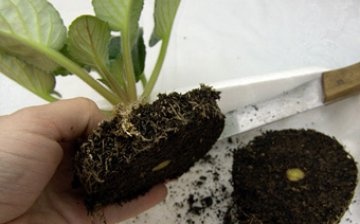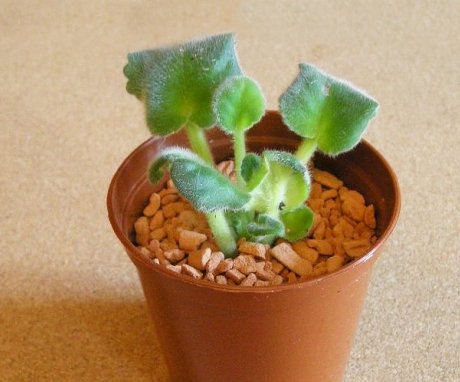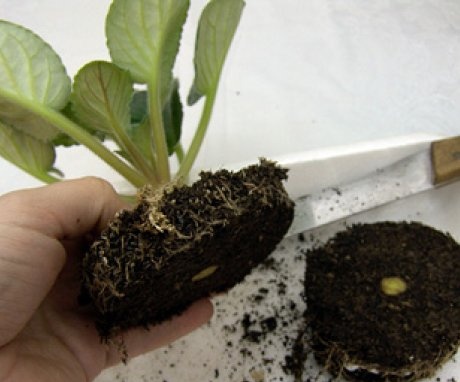When to transplant violets: time, features and care after transplant
Violet is a beautiful and rather unpretentious flower. Its transplant must be done as carefully as possible. At the same time, the flower grower must adhere to certain rules. This will allow not only to transplant the plant, but also not to harm it.
Content:
- Time and features of a violet transplant
- Preparatory stage
- Plant transplant
- Violet care after transplant
Time and features of a violet transplant
Violet it is best to replant in the spring. This is the most favorable time for transplanting this plant. You can also perform this action in autumn and winter.
In this case, it is necessary to provide the violet:
- Constant backlight
- Optimum temperature
- Required humidity
In the event that the temperature in the room fluctuates, then it should not go beyond the level that is required for the full growth and development of this plant. In the event that after transplants a violet is placed on a window with a low level of light and strong temperature fluctuations, then it may not take root. The most optimal time for transplanting this plant is spring and summer. At the same time, it should be dry and warm outside the window. If it rains frequently after transplanting the plants, this can lead to the death of the plant.
Violets can also be transplanted during the flowering period.
In this case, all flowers must be removed from the plant. That being said, don't hesitate. After strengthening the violet, it will bloom again. Peduncles break out of violets in order for new roots to form on it. The choice of the time for transplanting this plant directly depends on the wishes and requirements of the grower. When choosing a certain transplant period, it is imperative to adhere to the rules, otherwise the flower may not take root.
Preparatory stage
When transplanting violets, the flower itself requires preparation. It is made within a few days before the transplant. If the plant has dirty leaves, then they are washed and dried. During transplants of a given plant, its foliage must be dry without fail. After washing the leaves, the soil in the pot will become wet. That is why, before transplanting a violet, it is necessary to wait a few days for it to dry out.
If you want to transplant the plant as quickly as possible, then you need to cover the soil with plastic wrap while washing the leaves. It is forbidden to transplant violets if the earth is stuck together and adhered to the roots in the form of a coma.
Before transplanting a plant, containers are initially prepared:
- In this case, the diameter of the pot should be 2/3 smaller than the diameter of the rosette of this plant.
- If ceramic pots will be used for planting violets, then they must be soaked in water for a day.
- You can also use plastic pots for transplanting violets. These containers are best used for transplanting violets in the southern regions. With their help, the soil will be kept moist for a long time.
Soil after glaze violets should be not only loose, but also nutritious.That is why, during the transplant of violets, it is necessary to properly prepare the earthen mixture. Today there are several ways to prepare the earth:
- When using the first of them, it is necessary to take sphagnum and vermiculite - 1 part, peat - 1-2 parts and leafy ground - 3-4 parts.
- The second method requires two parts of leaf land, the same amount of vermicompost, peat, sand and half a part of coal.
During the preparation of the soil, all its components must be thoroughly mixed.
In the event that you do not have the time or opportunity to prepare the ground, do not be upset. You can purchase the ready-to-use mixture at a specialty store. To ensure the full growth and development of the plant, it is best to sterilize the soil. For this purpose, disinfecting drugs or the method of scalding the soil. This is where the preparatory stage ends.
Plant transplant
It is best to transplant violets with a change of soil. To do this, it is necessary to lay drainage at the bottom of the pot, with the help of which the highest quality watering plants. If it is necessary to water the violets through the wick, it is inserted into the pot at this stage.
When transplanting a plant, it is strictly forbidden to pull it out of the pot.
Initially, you need to take it along with the flower and knock on its walls as gently as possible. Further, the pot tilts a little so that excess earth spills out of it. In this case, it is necessary to ensure that the soil is not wet, but loose, which will make it as easy as possible to remove the plant from the pot.
In order to preserve the root system of the plant, it is necessary to shake off the soil from it by the method of gentle shaking. Further, old roots are removed from the plant, which are characterized by a brown color. Such roots no longer fulfill their functions, so they will only interfere with the full development of the plant's root system. When using the wick method of watering violets, the roots do not need to be removed before transplanting. This is due to the fact that the roots are washed during the watering of the plant. In the event that during the transplantation of the plant its roots are damaged, then these places must be covered with earth. If you are transplanting an old plant, you can use the same pot. When transplanting a young plant, it is necessary to use pot with a large diameter.
Violet care after transplant
After transplanting violets, it is necessary for her to provide a full care, thanks to which the plant will take root as quickly as possible.
Violet needs:
- Correct lighting
- Watering
- Top dressing
- Optimum temperature
The violet is quite sensitive to temperature changes. In order to ensure normal growth and development of this plant, it is necessary that the temperature be within 21-23 degrees. This plant does not tolerate drafts, therefore, it is necessary to limit them from their negative effects. Also, the violet should not tolerate sudden changes in temperature.
Violet must be placed on windows that are located on windows from the west or east.
This plant tolerates movement very well. on the windowsill, so it is necessary to regularly move violet and turn it towards the sun. In this case, it is necessary that the flowers or leaves do not come into contact with the window glass. In order to increase the flowering of this plant, it is necessary to use artificial lighting. For this purpose, a fluorescent lamp is used.
If the violet is provided with a light period of 10-12 hours a day, then its engraftment will be carried out as soon as possible. The sufficient amount of light for the violet will be indicated by its leaves. With too much light, the violet leaves will hang from the pot.In the event that the foliage of a given plant stretches upward, then this means that it does not have enough lighting. It is strictly forbidden to spray the violet. To maintain the required humidity level, a layer of expanded clay is placed in a pallet with a violet. Transplant violets and it is quite easy to care for her after the transplant. To do this, you just need to know the needs of a given plant and fully satisfy them.
More information can be found in the video.
















